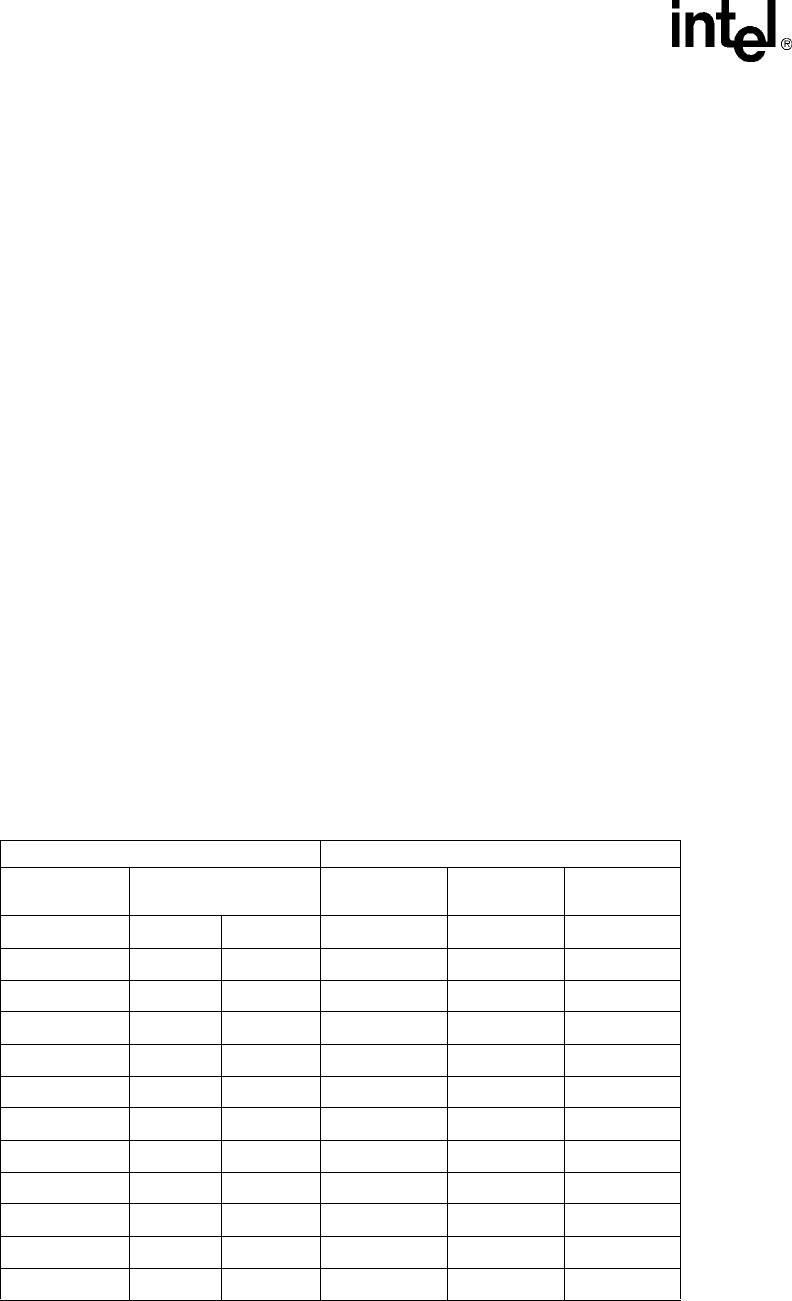User's Manual
Table Of Contents
- Contents
- Figures
- Tables
- Revision History
- About This Publication
- 1. Product Description
- 2. Programming Models
- 3. Device Handling
- 4. Event Handling
- 5. Error Handling
- 6. Application Development Guidelines
- 7. Call Progress Analysis
- 7.1 Call Progress Analysis Overview
- 7.2 Call Progress and Call Analysis Terminology
- 7.3 Call Progress Analysis Components
- 7.4 Using Call Progress Analysis on DM3 Boards
- 7.5 Call Progress Analysis Tone Detection on DM3 Boards
- 7.6 Media Tone Detection on DM3 Boards
- 7.7 Default Call Progress Analysis Tone Definitions on DM3 Boards
- 7.8 Modifying Default Call Progress Analysis Tone Definitions on DM3 Boards
- 7.9 Call Progress Analysis Errors
- 7.10 Using Call Progress Analysis on Springware Boards
- 7.11 Call Progress Analysis Tone Detection on Springware Boards
- 7.12 Media Tone Detection on Springware Boards
- 7.13 Default Call Progress Analysis Tone Definitions on Springware Boards
- 7.14 Modifying Default Call Progress Analysis Tone Definitions on Springware Boards
- 7.15 SIT Frequency Detection (Springware Only)
- 7.15.1 Tri-Tone SIT Sequences
- 7.15.2 Setting Tri-Tone SIT Frequency Detection Parameters
- 7.15.3 Obtaining Tri-Tone SIT Frequency Information
- 7.15.4 Global Tone Detection Tone Memory Usage
- 7.15.5 Frequency Detection Errors
- 7.15.6 Setting Single Tone Frequency Detection Parameters
- 7.15.7 Obtaining Single Tone Frequency Information
- 7.16 Cadence Detection in Basic Call Progress Analysis (Springware Only)
- 8. Recording and Playback
- 8.1 Overview of Recording and Playback
- 8.2 Digital Recording and Playback
- 8.3 Play and Record Functions
- 8.4 Play and Record Convenience Functions
- 8.5 Voice Encoding Methods
- 8.6 G.726 Voice Coder
- 8.7 Transaction Record
- 8.8 Silence Compressed Record
- 8.9 Recording with the Voice Activity Detector
- 8.10 Streaming to Board
- 8.11 Pause and Resume Play
- 8.12 Echo Cancellation Resource
- 9. Speed and Volume Control
- 10. Send and Receive FSK Data
- 11. Caller ID
- 12. Cached Prompt Management
- 13. Global Tone Detection and Generation, and Cadenced Tone Generation
- 13.1 Global Tone Detection (GTD)
- 13.1.1 Overview of Global Tone Detection
- 13.1.2 Global Tone Detection on DM3 Boards versus Springware Boards
- 13.1.3 Defining Global Tone Detection Tones
- 13.1.4 Building Tone Templates
- 13.1.5 Working with Tone Templates
- 13.1.6 Retrieving Tone Events
- 13.1.7 Setting GTD Tones as Termination Conditions
- 13.1.8 Maximum Amount of Memory for Tone Templates
- 13.1.9 Estimating Memory
- 13.1.10 Guidelines for Creating User-Defined Tones
- 13.1.11 Global Tone Detection Application
- 13.2 Global Tone Generation (GTG)
- 13.3 Cadenced Tone Generation
- 13.3.1 Using Cadenced Tone Generation
- 13.3.2 How To Generate a Custom Cadenced Tone
- 13.3.3 How To Generate a Non-Cadenced Tone
- 13.3.4 TN_GENCAD Data Structure - Cadenced Tone Generation
- 13.3.5 How To Generate a Standard PBX Call Progress Signal
- 13.3.6 Predefined Set of Standard PBX Call Progress Signals
- 13.3.7 Important Considerations for Using Predefined Call Progress Signals
- 13.1 Global Tone Detection (GTD)
- 14. Global Dial Pulse Detection
- 14.1 Key Features
- 14.2 Global DPD Parameters
- 14.3 Enabling Global DPD
- 14.4 Global DPD Programming Considerations
- 14.5 Retrieving Digits from the Digit Buffer
- 14.6 Retrieving Digits as Events
- 14.7 Dial Pulse Detection Digit Type Reporting
- 14.8 Defines for Digit Type Reporting
- 14.9 Global DPD Programming Procedure
- 14.10 Global DPD Example Code
- 15. R2/MF Signaling
- 16. Syntellect License Automated Attendant
- 17. Building Applications
- Glossary
- Index

176 Voice API Programming Guide — June 2005
R2/MF Signaling
R2/MF signals that are used for supervisory signaling on the network are called line signals. Line
signals are beyond the scope of this document.
15.2 Direct Dialing-In Service
Since R2/MF address signals can provide the telephone number of the called subscriber’s line, the
signals may be used by applications providing direct dialing-in (DDI) service, also known as direct
inward dialing (DID), and dialed number identification service (DNIS).
DDI service allows an outside caller to dial an extension within a company without requiring an
operator to transfer the call. The central office (CO) passes the last 2, 3, or 4 digits of the dialed
number to the customer premises equipment (CPE) and the CPE completes the call.
15.3 R2/MF Multifrequency Combinations
R2/MF signaling uses a multifrequency code system based on six fundamental frequencies in the
forward direction (1380, 1500, 1620, 1740, 1860, and 1980 Hz) and six frequencies in the
backward direction (1140, 1020, 900, 780, 660, and 540 Hz).
Each signal is composed of two out of the six fundamental frequencies, which results in 15
different tone combinations in each direction. Although R2/MF is designed for operation on
international networks with 15 multifrequency combinations in each direction, in national networks
it can be used with a reduced number of signaling frequencies (for example, 10 multifrequency
combinations). See Table 21 and Table 22 for lists of the signal tone pairs.
Table 21. Forward Signals, CCITT Signaling System R2/MF tones
R2/MF TONES INTEL INFORMATION
Tone Number
Tone Pair Frequencies
(Hz)
Group I
Define
Group II
Define
Tone Detect.
ID
1 1380 1500 SIGI_1 SIGII_1 101
2 1380 1620 SIGI_2 SIGII_2 102
3 1500 1620 SIGI_3 SIGII_3 103
4 1380 1740 SIGI_4 SIGII_4 104
5 1500 1740 SIGI_5 SIGII_5 105
6 1620 1740 SIGI_6 SIGII_6 106
7 1380 1860 SIGI_7 SIGII_7 107
8 1500 1860 SIGI_8 SIGII_8 108
9 1620 1860 SIGI_9 SIGII_9 109
10 1740 1860 SIGI_0 SIGII_0 110
11 1380 1980 SIGI_11 SIGII_11 111
12 1500 1980 SIGI_12 SIGII_12 112










